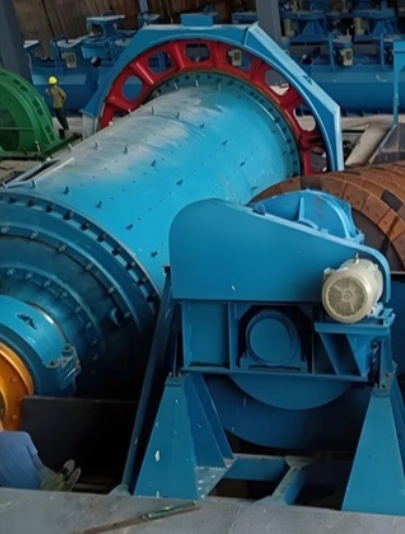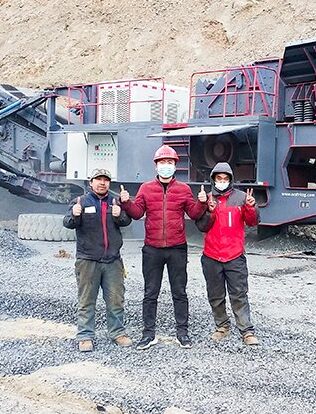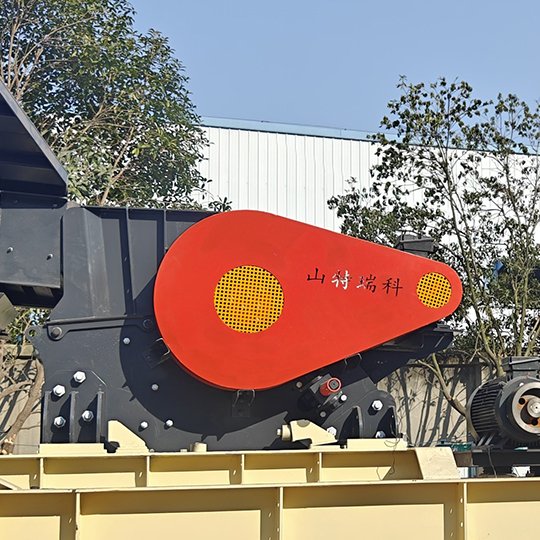Selecting the best Jaw Crusher is not so much about buying the largest, or most expensive, machine available. It is about matching powerful technology with your exact needs. Choosing incorrectly can be a recipe for costly inefficiencies and reduction in production. This extensive guide will provide you with the important elements in Jaw Crusher selection that will enable you to make an informed choice and make the most of your investment. Let’s get started.
Step 1: Know Your Material – The Basis for Success
The type of rocks or minerals you want to crush will dictate the fundamental requirements of the Crusher. The quickest way to ruin something is to overlook this point.
Hardness and Abrasiveness:
Are you working with hard granite, basalt, softer types of limestone, or recycled concrete? Hard and, especially, abrasive materials require a better Crusher with the type of wear-resistant parts (for example, high-manganese steel jaw plates) that will give you some wear-resistance and the right type of design (for instance, a double-shoulder Jaw Crusher is typically designed for this type of use, and is also known for handling rough circumstances). (Answer to “Which Jaw Crusher for hard rock?”)
Input Size:
What is the maximum size of the rocks or particle size you can put through (process) the Crusher? This will determine the feed opening width of the Crusher directly.
Output Size:
What is the minimum particle size required in the final product? This will determine both the adjustment range required of the discharge opening (CSS), and if you require a secondary crushing stage to obtain your final product size.
Water and Clay Content:
Moist, sticky materials can cause blockages. Anti-blockage Crusher designs (i.e., a steeper crushing chamber, larger discharge openings) are key in this consideration.
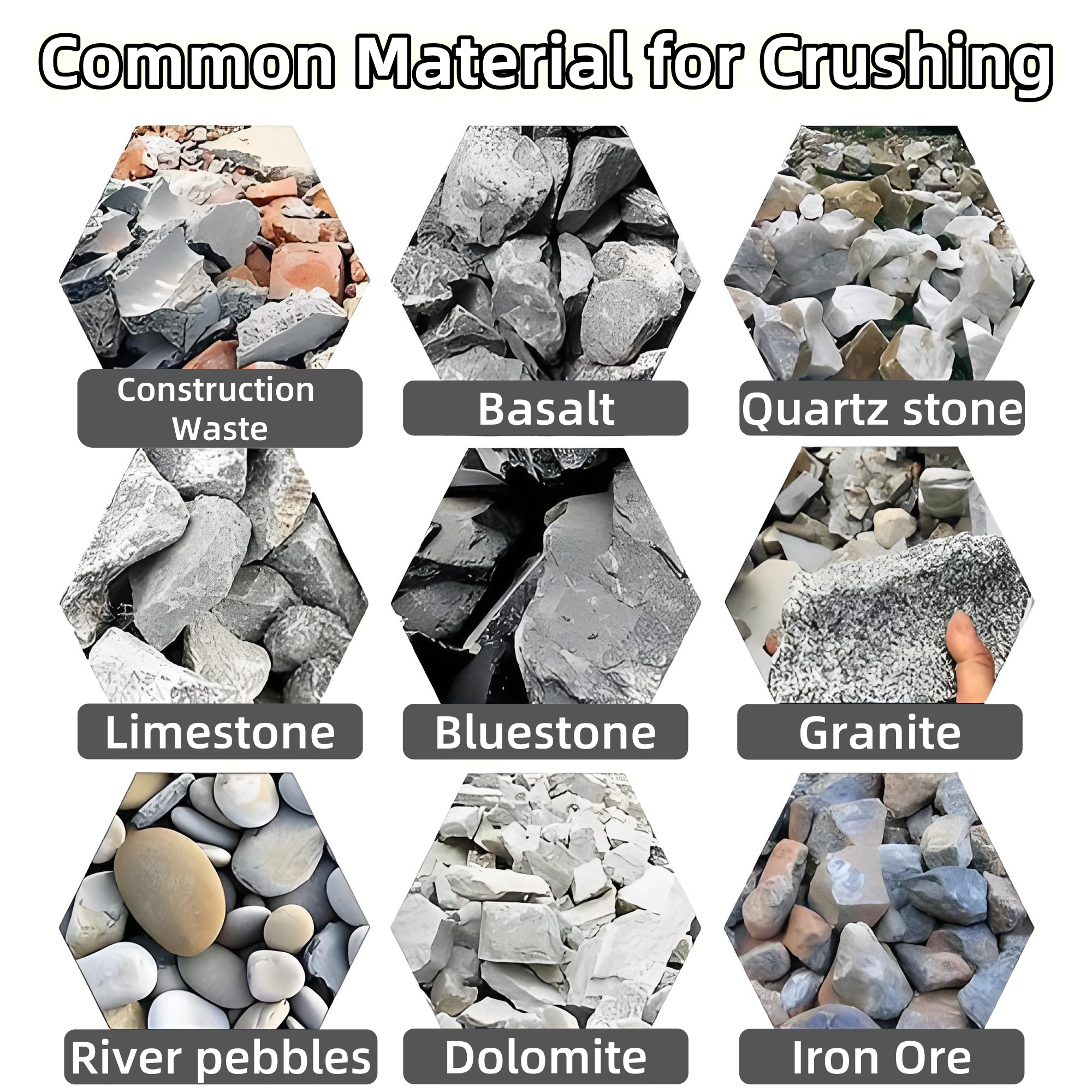
Figure 1 Common Material for Crushing
Step 2: Clarify Your Production Needs – Capacity is King
The hardness and density of the material are crucial to the crushing operation. Hardness affects the crushing energy consumption and component wear, while density is related to the fluidity of the material in and out.
The uniformity of the feed particle size distribution is critical. When it is uniform, the Crusher load is stable and conducive to operation; when it is uneven, the equipment may be overloaded when processing large particles, affecting its life and efficiency.
In terms of the desired discharge particle size, a smaller CSS (discharge port setting value under closed-loop circulation) usually corresponds to a lower production capacity. Because finer discharge particle sizes require more time and energy to crush, resulting in a decrease in output per unit time.
The selection of Crusher models and specifications requires comprehensive factors such as material characteristics, feed particle size distribution and desired discharge particle size to select the equipment that best suits actual production needs and achieve efficient and stable crushing.
The location and frequency of crushing will dictate the type of mobility, it is also an important cost and operational consideration.
Step 3: Site and Mobility – Fixed Fortress or Mobile Vanguard?
Mobile Jaw Crusher (Tire/Crawel):
Set-up: Very low requirements, it can be driven straight to the job site without a permanent foundation.
Mobility: Very flexible, used mostly by multi-project contractors, in sites that have constraints imposed, in situations where crushing is required at the source to save transportation cost.
Capacity: Very good throughput for its class, however, the maximum throughput will typically be less than a large fixed piece of equipment.
Cost advantage: Saving on cost transportation on material can be significant, more advantageous when the need for fast set-up and flexible movement is required, it can overall be more cost competitive for projects that require them to relocate, or where crushing is done in its entirety at the source.
Situations: Short term contracts, multi-site projects, urban demolition – recycled materials crushing, remote sites, and sites where material can be crushed in-situ at the extraction point.
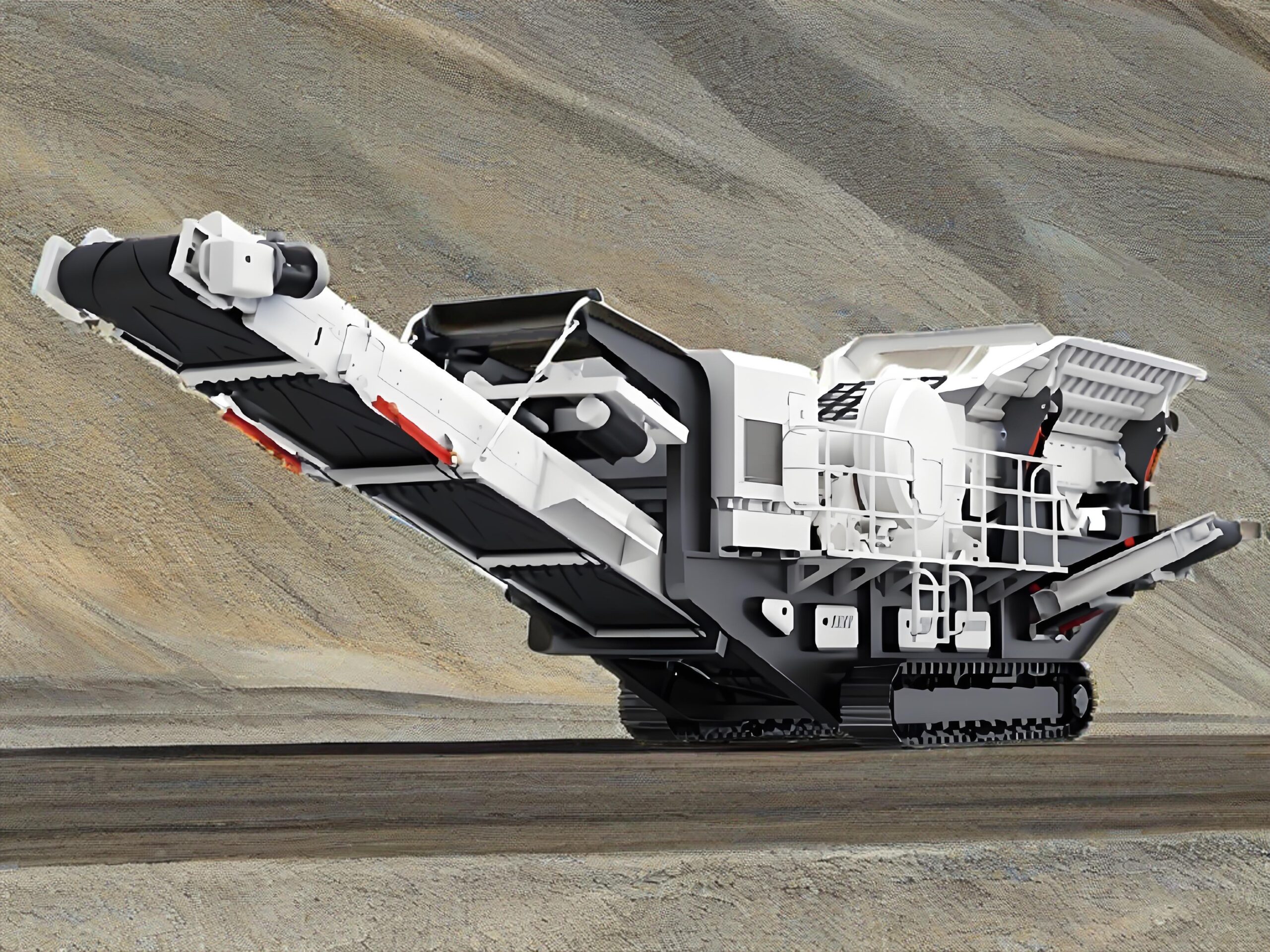
Figure 2 Crawl Jaw Crusher
A Fixed Jaw Crusher Consists of:
Installation and set-up: high initial cost, concrete pad, needs to be tied in to feeding and conveying.
Mobility: fixed in place, disassembly for moving is considerable, costly.
Productivity: designed to run at maximum throughput and efficiency; it is the heart of any production line of large stone and very large scale 24 hour mining operation.
Cost advantage: when production is performed high volume, co-existing long term, on one site, the ton cost can be the lowest, and the high initial investment will be compensated for by long-term, high efficiency.
Applicable scenarios: large quarry operations, mines, permanent aggregate production sites, sites with many years of goal and to maximize production.
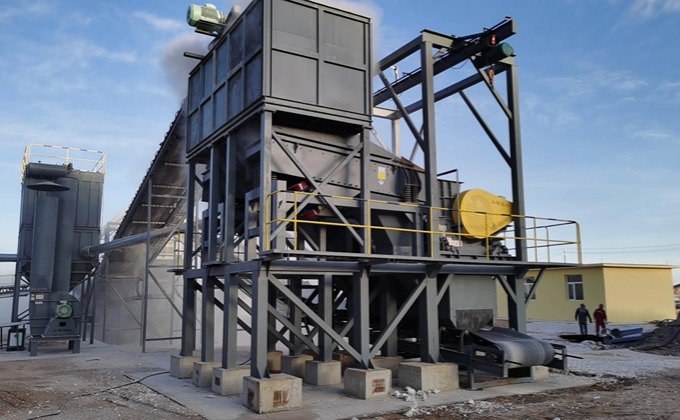
Figure 3 Fixed Jaw Crusher
Step 4: Consider Total Cost and Long-Term Value (Beyond Price)
Purchase price may just be the beginning, but total cost of ownership is where it counts.
Consumption of Wear Parts:
Abrasive material will wear jaws and liners out faster and increase the cost of replacing both the jaws and liners, as well as replacing more frequently. If your equipment is built and designed with a lifespan in mind, in conjunction with easily sourced spare parts that have a history of being industry standards, then you are generally going to have equipment that holds value better. Moreover, wear parts that have higher quality wear-resistant materials will help extend the life of your equipment and reduce long-term costs.
Energy Efficiency:
Crushing machines have different drive types (electric/diesel); different designs with different energy consumption rates; efficient operation is an important consideration in reducing costs.
Maintenance Requirements:
You need to ensure your components are checked and replaced, such as jaws and toggle plates. A hydraulic adjustment setup would likely present complications, and downtime means adjusting CSS (closed side setting). Durability in designs can allow for intervals in between overhauls.
Reliability and Durability:
The cost implications of production loss from a machine that fails often are orders of magnitude greater than the costs of the reliable, efficient and durable machine. It is better to be more discerning and select machines that are tried and tested, associated with the best recent manufacturing technology.
Step 5: Compare Key Specifications and Features – It Is The Devil in The Details
Dive into the specifications that are related to performance:
Feed opening: has to allow the maximum feed size.
Motor power: has to provide crushing force enough to crush material hardness and achieve TPH.
CSS range: specifies maximum particle size adjustment and broader ranges gives greater product flexibility.
Crushing chamber design: has an effect on efficiency, product shape (cubic is more ideal) and uniformity of jaw wear; it can maximize production and minimize cycle loads with the greatest optimal design.
Adjustment method: hydrolic adjust is a real determinting factor for many modern operations; funds the operator in changing the CSS quickly and relatively safely with regards to injury and usually with little to no downtime to change it; maximizes uptime; traditionally, shim adjustments are fairly slow and require the operator to stop production.
Overload protection: the integral system (hydraulic, or mechanical) is essential; it can automatically protect the Crusher from major damage with an uncrushable object entering the crushing chamber.
Drive options: primarily electric ( for stationary plants connected to the grid) + diesel/hydraulic drive (critical to the mobile equipment with no access to the grid).
Conclusion: The Road to Achieving the Right Jaw Crusher For You
There isn’t a “best” Crusher – there is only the best for your application.
Choosing a Jaw Crusher is a strategic investment. Systematically evaluating your material, capacity, mobility, total cost of ownership and critical key specifications will take the guesswork and help you make a sound decision.
Contact us today! Let us apply our experience to help you choose the right Jaw Crusher to deliver maximum productivity and profitability.


